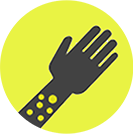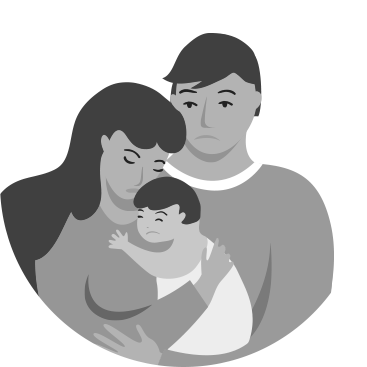Parents and caregivers of children with Alagille syndrome describe pruritus as the most challenging symptom, citing the anxiety, sleep deprivation, fatigue, and emotional distress associated with unrelenting itching and scratching.2-4
In addition to unrelenting itching and scratching, cholestatic pruritus leads to skin damage, bleeding, scarring, cutaneous mutilation, sleep disturbances, disrupted school activities, and more.1-4
Furthermore, many children with Alagille syndrome encounter significant growth deficits and a failure to thrive.2,4,5
We end up with bloody bed sheets, wounds on his face, and him wanting to tear his skin off. –Robigaile B.
While pruritus is considered the most unbearable symptom associated with cholestatic liver disease in Alagille syndrome, xanthomas are also common, affecting 30% to 42% of patients and usually appearing at a median of 20 months to 48 months of age. In patients with a native liver, the presence of xanthomas is associated with a worse 10-year survival rate than in those without.2,6
Out of a group of children with Alagille syndrome who had xanthomas (36%)3:
12% had restrictions in physical activity
61% felt their physical appearance was affected
46% felt distraught
Xanthomas are also associated with poor long-term hepatic outcomes.7
Malnutrition and growth deficiencies are common in Alagille syndrome, and these may be related to the impaired absorption of fat and fat‑soluble vitamins. Children may have growth hormone resistance, and their short stature may be because of cholestasis, cardiovascular abnormality, and/or defective bone development.7,8




